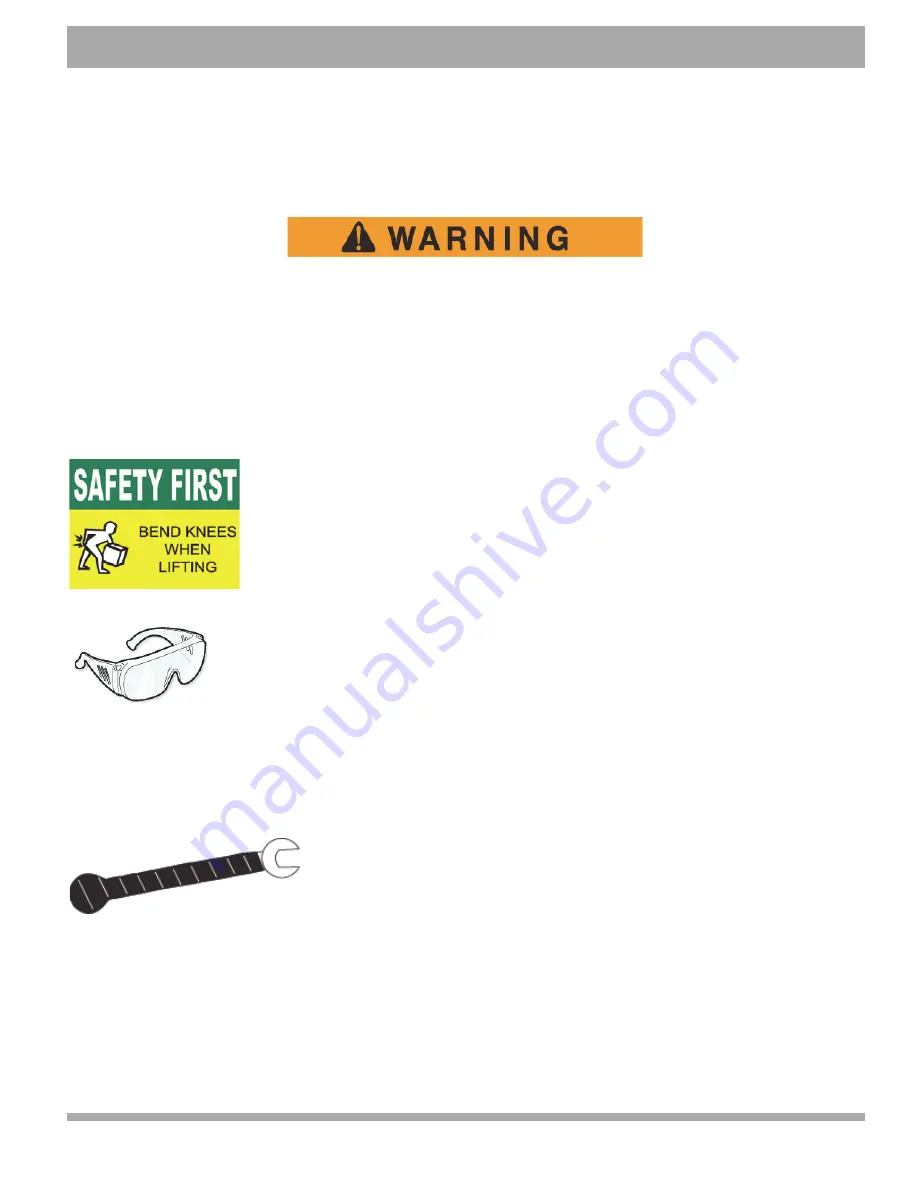
B
MAINTENANCE
Read all of SAFETY and this section before attempting any procedure. Pay particular attention to Notices, Cautions, Warnings and Dangers.
37
Owner’s Manual
BATTERY CHARGING AND MAINTENANCE
Battery Safety
Always observe the following warnings when working on or near batteries.
To prevent battery explosion that could result in severe personal injury or death, keep all smoking
materials, open flames or sparks away from the batteries.
Hydrogen gas is formed when charging batteries. Do not charge batteries without adequate venti-
lation. A 4% concentration of hydrogen gas is explosive.
Be sure that the key switch is off and all electrical accessories are turned off before starting work
on the vehicle.
Never disconnect a circuit under load at a battery terminal.
Batteries are heavy. Use proper lifting techniques to move them. Always lift
the battery with a commercially available battery lifting device. Use care not
to tip batteries when removing or installing them; spilled electrolyte can
cause burns and damage.
Electrolyte in a storage battery is an acid solution which can cause severe
burns to skin and eyes. Treat all electrolyte spills to the body and eyes with
extended flushing with clear water. Contact a physician immediately.
Always wear a safety shield or approved safety goggles when adding water or
charging batteries.
Neutralize electrolyte spills with a solution of 1/4 cup (60 ml) sodium bicarbon-
ate (baking soda) dissolved in 1-1/2 gallons (6 liters) of water and flush with
water.
Overfilling batteries may result in electrolyte being spilled from the battery during the charge cycle.
Expelled electrolyte may cause damage to the vehicle and storage facility.
Aerosol containers of battery terminal protectant must be used with extreme care. Insulate metal
container to prevent can from contacting battery terminals which could result in an explosion.
Wrap wrenches with vinyl tape to prevent the possibility of a
dropped wrench from shorting out a battery, which could result in an
explosion and severe personal injury or death.
Battery Disposal
Lead-acid batteries are recyclable. Return whole scrap batteries to distributor, manufacturer or lead smelter for recycling.
For neutralized spills, place residue in acid-resistant containers with absorbent material, sand or earth and dispose of in
accordance with local, state and federal regulations for acid and lead compounds. Contact local and/or state environ-
mental officials regarding disposal information.
Summary of Contents for 640690-G
Page 1: ...OWNER S MANUAL 640689 G RECOIL iS REVISED FEBRUARY 2016 ISSUED JULY 2014...
Page 8: ...B vi TABLE OF CONTENTS Owner s Manual...
Page 57: ......
Page 58: ......
















































